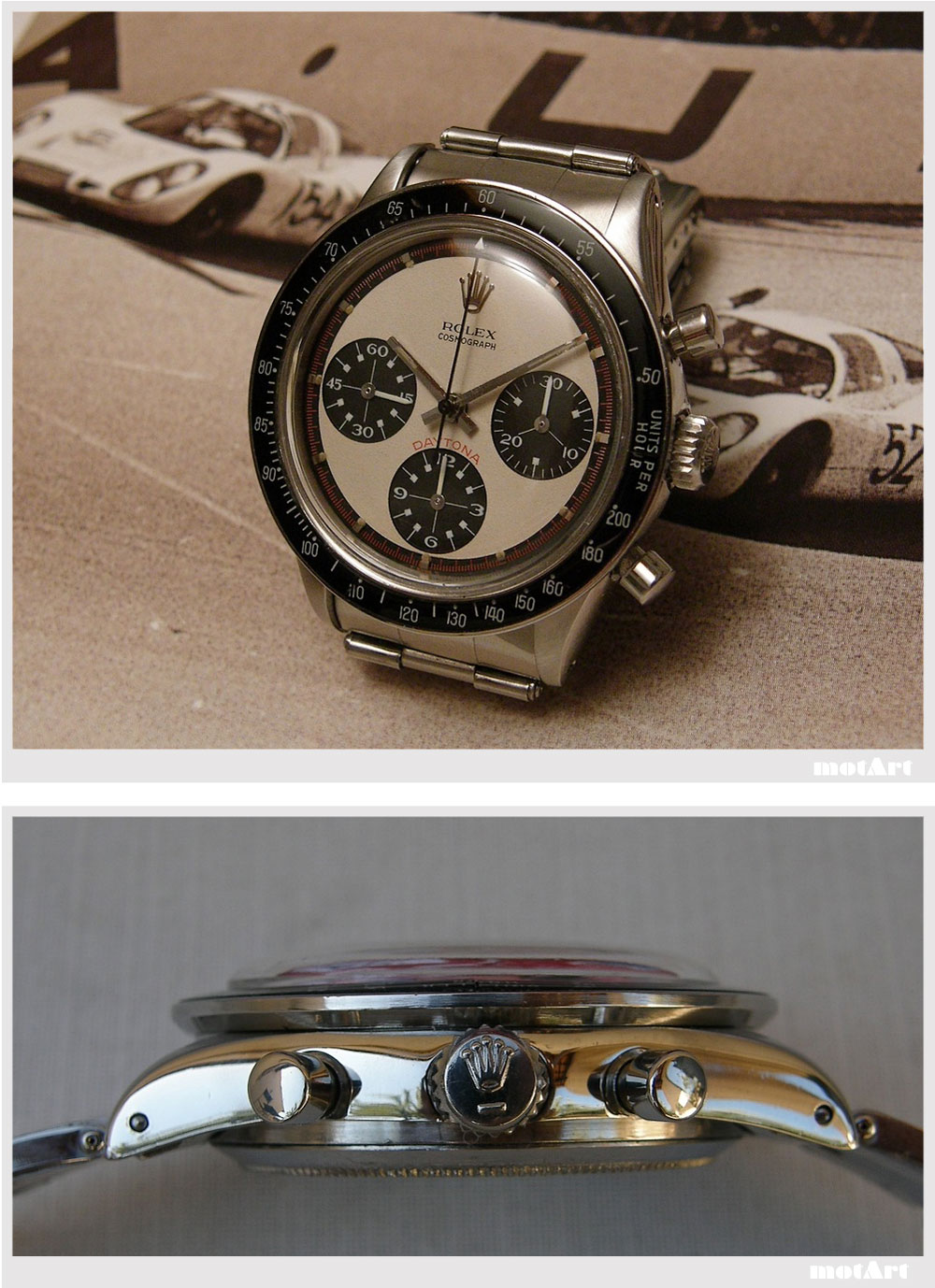
 In 1961, Rolex released a Cosmograph version (model 6241), and soon these watches became known as the Daytona, so named for Daytona Beach, Florida, home to some of the biggest names in auto racing. Because of their usefulness in calculating average lap speed, the watches were quite popular in the racing community.
In 1961, Rolex released a Cosmograph version (model 6241), and soon these watches became known as the Daytona, so named for Daytona Beach, Florida, home to some of the biggest names in auto racing. Because of their usefulness in calculating average lap speed, the watches were quite popular in the racing community.Early models were available in a number of dial configurations, including what has become known as the exotic dials. These dials were either black (with white registers), or cream (with black registers), and featured square markers within the registers. These configurations were subsequently nicknamed the Paul Newman models, and were quickly in high demand in the Italian markets—and still are to this day.
Thanks to John E. Brozek
.





1 comment:
Elle est formidable la Daytona "Paul Newman" !
Post a Comment